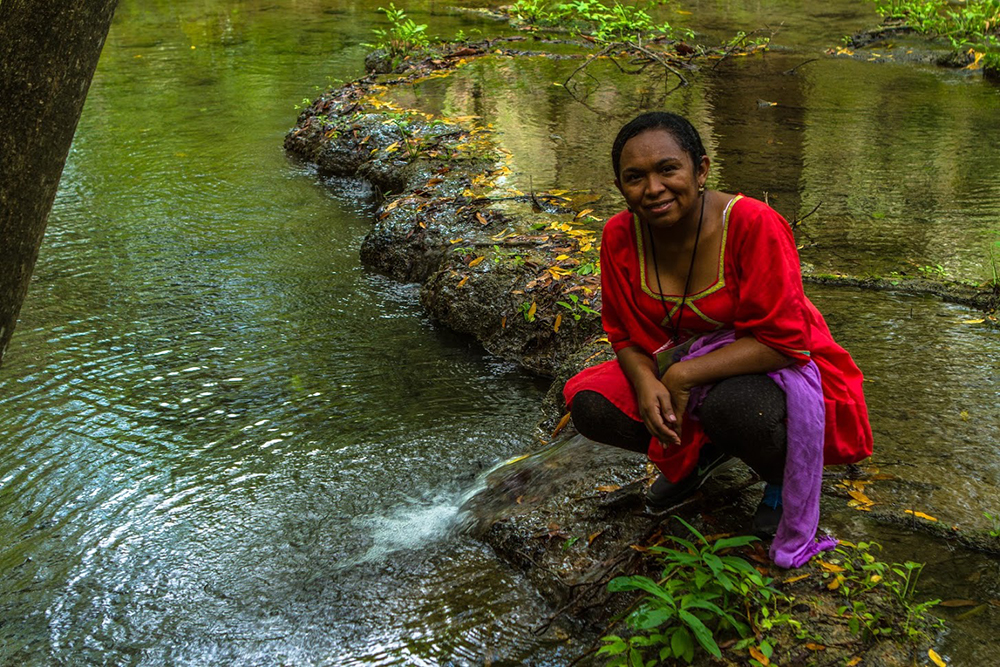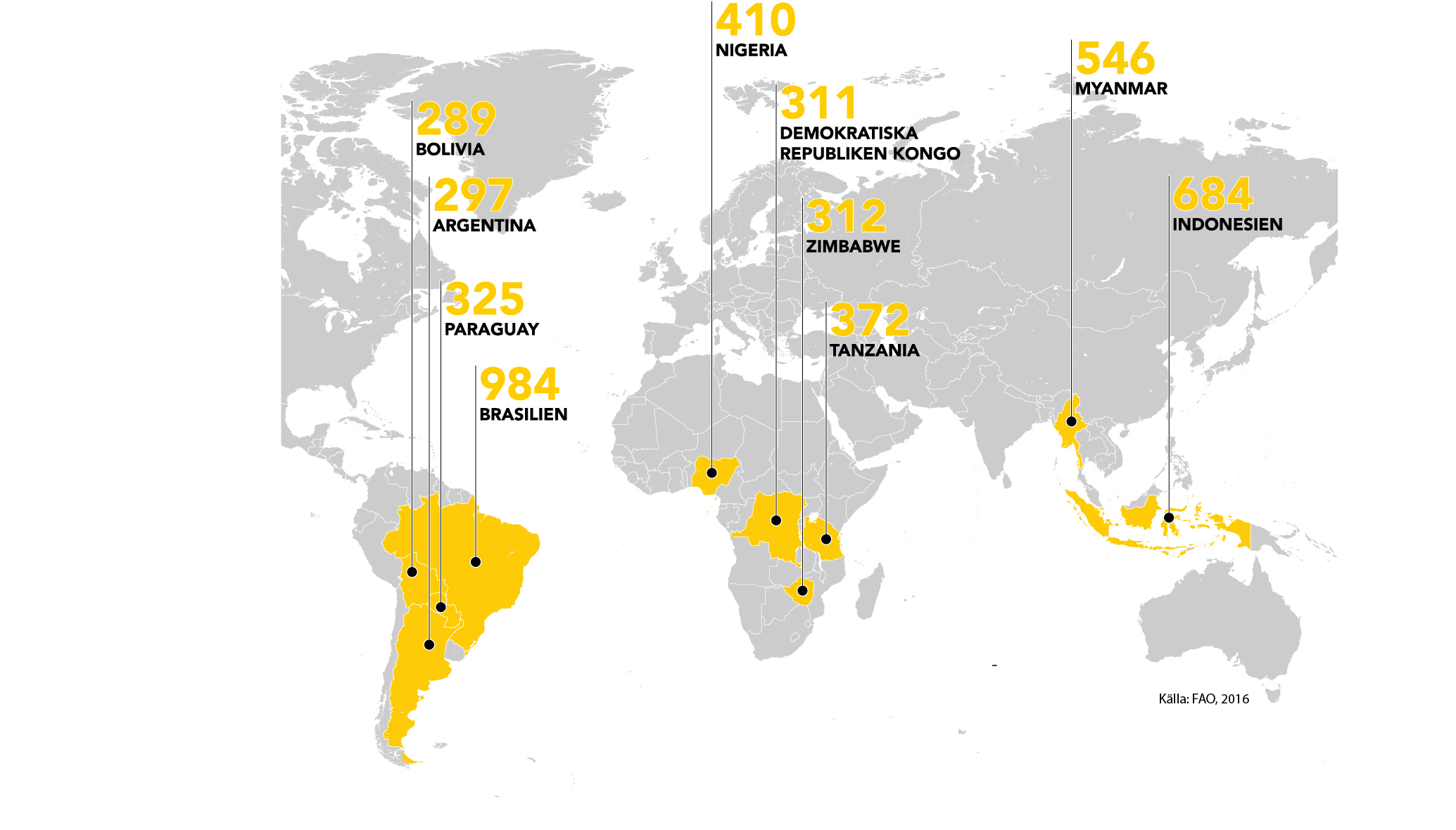ENVIRONMENT
Photo: Roland Brockmann/MISEREOR
Water pollution
Mining activities are typically highly water-intensive and require powerful cleaning systems to manage the large number of chemicals that are used. Mining applications in many places have transformed wide rivers into small streams. Chemicals make lakes entirely change colour. Informal extraction causes severe water pollution because treatment of toxic chemicals is entirely unregulated. Many mines also release toxic particulate matter into the air that end up in watercourses.
Some examples
- Norilsk in Russia is currently considered one of the most contaminated places on Earth due to its large nickel industry. It has polluted air and land with sulphur oxide, caused acid rain, and released heavy metals into the water supply. Russian nickel factories are also responsible for mercury pollution in the Arctic. All such facilities have resulted in severe health risks.
- The extraction of lithium in Bolivia’s already water-scarce salt plains has contaminated water used by the local population for drinking and agriculture. Many households have become reliant upon the drinking water that is now delivered to the area in tanker trucks. The area is believed to have some 70 per cent of the world’s lithium reserves and is vulnerable to considerable threat as demand for lithium continues to grow. Lithium is used in batteries for smartphones and electric vehicles.
- Three thousand litres of sulphuric acid leaked into the sea from a copper mine in north west Mexico in July 2019. Researchers warned that marine plant life, fish and the entire ecosystem in the area would be hit. The company operating the mine was already under investigation for 22 other incidents involving environmental impact in the past decade. Environmentalists are now calling for the withdrawal of the mining company’s licence.
- Four years after the catastrophic mining accident at Minas Gerais in Brazil, when a dam burst releasing mud containing poisonous mine waste, the water in the Doce river is still unfit for use at 90 per cent of the points where measurements are taken. The river was poisoned by heavy metals and chemicals resulting in the death of all fish contained in it. The river, which supplied more than 200 towns, was destroyed and 280,000 people were left without access to clean water. Brazil’s environment minister has described the release of the poisonous waste as the country’s worst ever environmental catastrophe.
Water-use in mineral extraction
Water is used throughout the process of extracting minerals. Different types of minerals require different amounts of water.
Source: Pollution to Water
Impact on ecosystems
Mining – particularly surface mining and mountain removal mining – frequently causes long-term and sometimes irreversible impact on ecosystems and biodiversity. Erosion and destruction of coral reefs and mango swamps are common. Surface mining also destroys large areas of land. When mines are decommissioned, large holes in the ground remain, and spills involving heavy metals, acids, and toxic chemicals can continue for many years after mining operations have ceased.
Some examples
- At the Cerrejón coal mine in Colombia, the company that operates the mine has re-routed the Arroyo river in a specially dug 3.6km long channel to access coal reserves on the river bed. Villagers in the area claimed that this would cause severe damage to the delicate ecosystem and biodiversity around the river. This would impact pasture used for livestock, fish in the river and water access for a large number of villages. A court ruled that roundtable talks should be held to decide whether the river should be returned to its original position. The mining company has been accused of failing to follow the court’s ruling when representatives from the affected villages were not invited to participate in talks that resulted in the company deciding not to return the river to its original course.
- China is the world’s largest producer of rare earth metals that are used in many products such as smartphones, TV screens and engines for electric vehicles. Extraction of these metals requires extensive use of chemicals and generates large amounts of toxic and radioactive waste. Outside the industrial city of Baotou in Mongolia, an enormous toxic lake has formed by mining waste being dumped there over many years. The area, which used to be arable farmland, has been destroyed and the waste has poisoned the groundwater and surrounding land. Farmers have been robbed of their livelihoods as harvests and livestock have been affected and have been forced to move away.
Jazmin Romero on the bank of the river Arroyo in Colombia. Villagers protested against the mining company Cerrejón’s plans to re-route the river. Photo: Javier De la Cuadra
Destruction of the rainforests
The world’s rainforests are home to around 50 per cent of all land animals and plants. They are also important to mitigate climate change because they absorb carbon dioxide in the atmosphere and binds it (they function as so-called carbon sinks). Mining, illegal and unsustainable logging, the conversion of forest into agricultural land and large-scale animal husbandry are some of the causes of the destruction of tropical rainforest. Seventeen per cent of the Amazon rainforest has been destroyed in the past 50 years.
Area in hectares that has been felled annually 2010-15
Source: FAO, 2016
Some examples
- The Brazilian president Jair Bolsonaro wants to clear large tracts of the Amazon rainforest for soya production, start mining and increase meat production. This would have devastating consequences for local and indigenous populations who depend on the rainforest for their survival, the rich animal life and the earth’s climate. Since Bolsonaro became president, an area of forest larger than Gotland has been felled while at the same time protection for the forest has been weakened. Fires in the Amazon in August 2019 have made the situation acute.
- Peru’s rainforest is the fourth largest in the world and is one of the richest in terms of biological diversity. The forests are home to more than 3.5 million people, among them 60 different indigenous people. But illegal logging is widespread and represents a major threat to the forests. A report by Global Witness suggests that the country’s largest sawmill processes timber illegally and that forestry companies exploit corrupt authorities to falsify documentation about where timber originates from.
- Global Witness claims that European companies illegally import timber from Congo Kinshasa. In 2018, 10 companies were reported to have sold illegally sourced timber valued at around 2 million euro. Trees are felled and timber sold by the country’s second largest timber exporter. Illegal and unsustainable felling is one of the main threats facing the forests, which are the world’s second largest rainforest and that provide millions of people with food, water and their livelihood. The biological diversity of these forests is enormous with thousands of plant and animal species.



